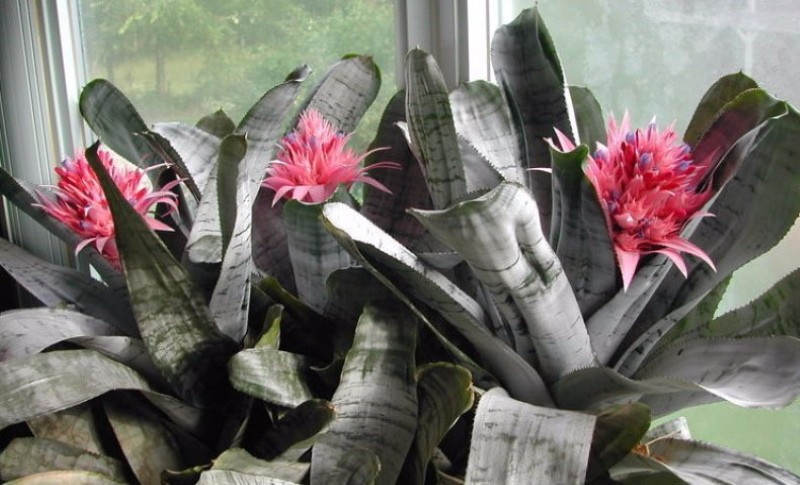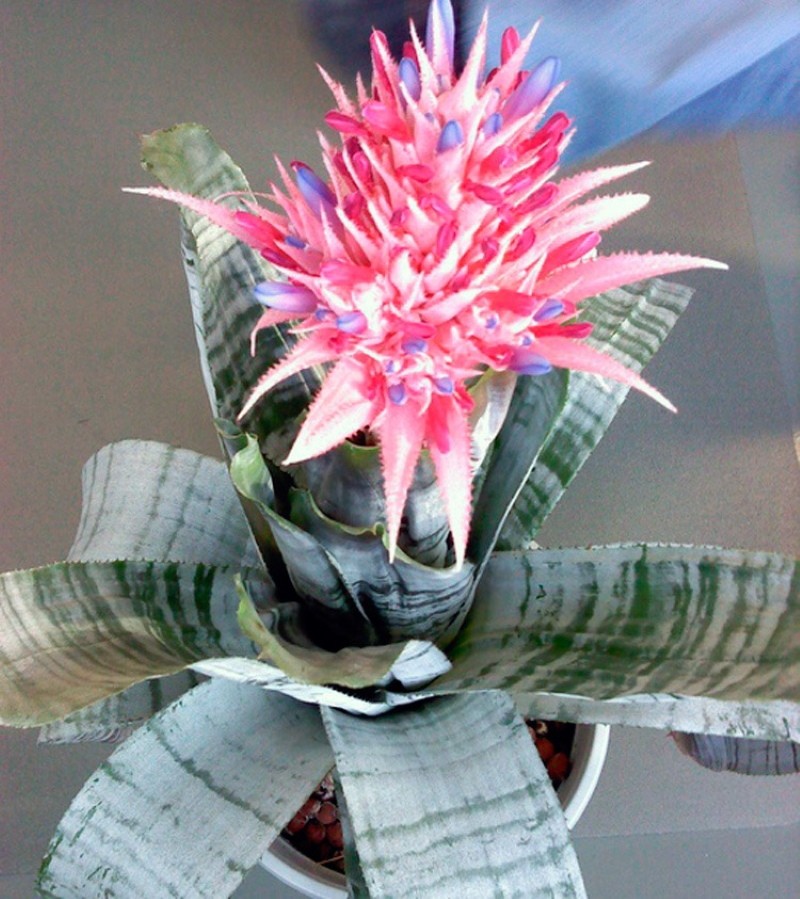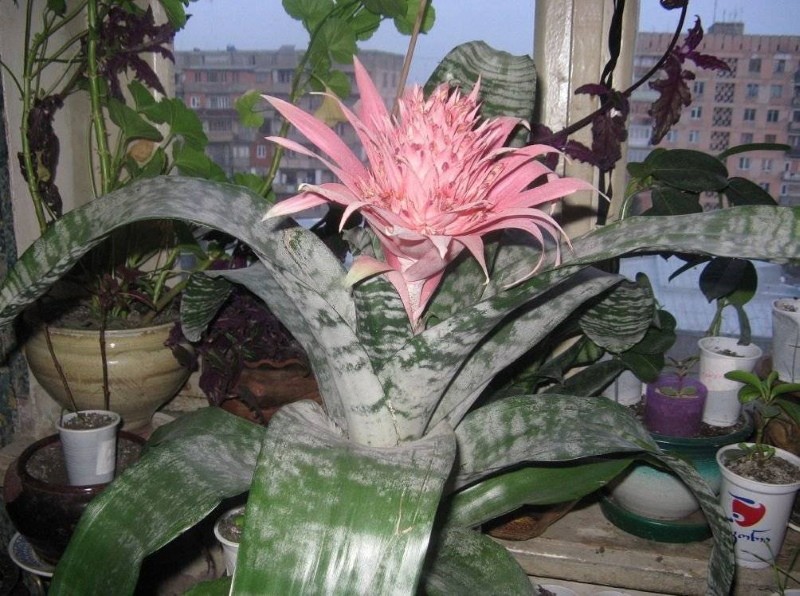Life in exchange for gorgeous flowering and procreation - how to care for striped echmea at home
 This plant surprisingly combines unpretentious character and decorative appearance. The very name of the striped echmea makes it clear that it looks unusual and original. But if you also want to see colorful flowering, you will have to learn how to care for striped echmea at home. Although the tropical culture has taken root well in our homes and apartments, it needs special conditions to form the ovary, namely, a temperature difference. The only drawback of the chic echmea is that it blooms only once in a lifetime.
This plant surprisingly combines unpretentious character and decorative appearance. The very name of the striped echmea makes it clear that it looks unusual and original. But if you also want to see colorful flowering, you will have to learn how to care for striped echmea at home. Although the tropical culture has taken root well in our homes and apartments, it needs special conditions to form the ovary, namely, a temperature difference. The only drawback of the chic echmea is that it blooms only once in a lifetime.
Brief characteristics and features of ehmea

Echmei form a funnel-shaped rosette of elongated leaves, but unlike other bromeliads, they have spines. They are located along the edge of the leaf plates in the form of notches. The leaves themselves can be either hard or soft. The striped echmea has leathery belt-shaped leaves up to 60 cm long. Its main feature is the original pattern on the leaf plates. Their main color is dark green, but light stripes resembling a marble pattern are visible throughout the leaf.
Like all other ehmei, the striped variety produces a tall peduncle. Its length can be up to 30 cm, and the structure is very original. The flowers themselves are small, blue, and the surrounding pink-red sharp petals are actually bracts.
The striped echmea lives for about 4-5 years, and blooms only once, after which the rosette dies off. But during this time she manages to give daughter sockets, which continue her family.
Flower requirements for lighting and temperature of content
 In general, ehmei are not particularly demanding on lighting and may well grow in partial shade. But, given that the striped variety belongs to the variegated, it needs more light. An oriental window sill is more suitable with a striped echmea. South windows will also work, but only if shaded. The sun's rays must be diffused, otherwise they will leave burns on the leaves.
In general, ehmei are not particularly demanding on lighting and may well grow in partial shade. But, given that the striped variety belongs to the variegated, it needs more light. An oriental window sill is more suitable with a striped echmea. South windows will also work, but only if shaded. The sun's rays must be diffused, otherwise they will leave burns on the leaves.
Ehmeya tolerates heat well and it will be comfortable even at plus 26-28 ° С in summer. Provided that you take care of high humidity. Like all tropical cultures, Ehmeya dislikes dry air.
In winter, the flower needs cooler values, 15-18 ° C of heat. And this is due not so much to the dormant period (the echmea does not have a pronounced rest), but to flowering. In order for the outlet to give a peduncle, it needs temperature drops. And not only for the seasons, but preferably between day and night, about 5 ° C, as for orchids.Since it is not very convenient to organize this in the apartment, make sure that at least in winter the ehmeya lives in a cool place.
How to care for striped echmea at home
 Having correctly chosen a place for a flower with a comfortable microclimate, you will only have to support its development:
Having correctly chosen a place for a flower with a comfortable microclimate, you will only have to support its development:
- Sprinkle abundantly with settled water in the spring and summer. In this case, until the peduncle appears, pour a little water directly into the center of the outlet. During the flowering period, watering is only in the pot.
- In the warm season, spray the bush, as well as in winter, if it was not possible to lower the temperature of the content.
- Add liquid bromeliad fertilizer to your irrigation water. Feed the flower twice a month in the spring and once every 1.5 months in the winter.
- Transplant the shrub into a larger pot each spring using a substrate for bromeliads.
After your ehmeya has faded, wait for the peduncle to dry and cut it off. The mother socket will gradually dry out too, but do not rush to remove it. For some time, it still feeds the daughter sockets, which are formed below. When they grow up and acquire their own roots, it will be possible to separate and plant in separate pots. This is how the striped echmea multiplies, continuing its existence in children.